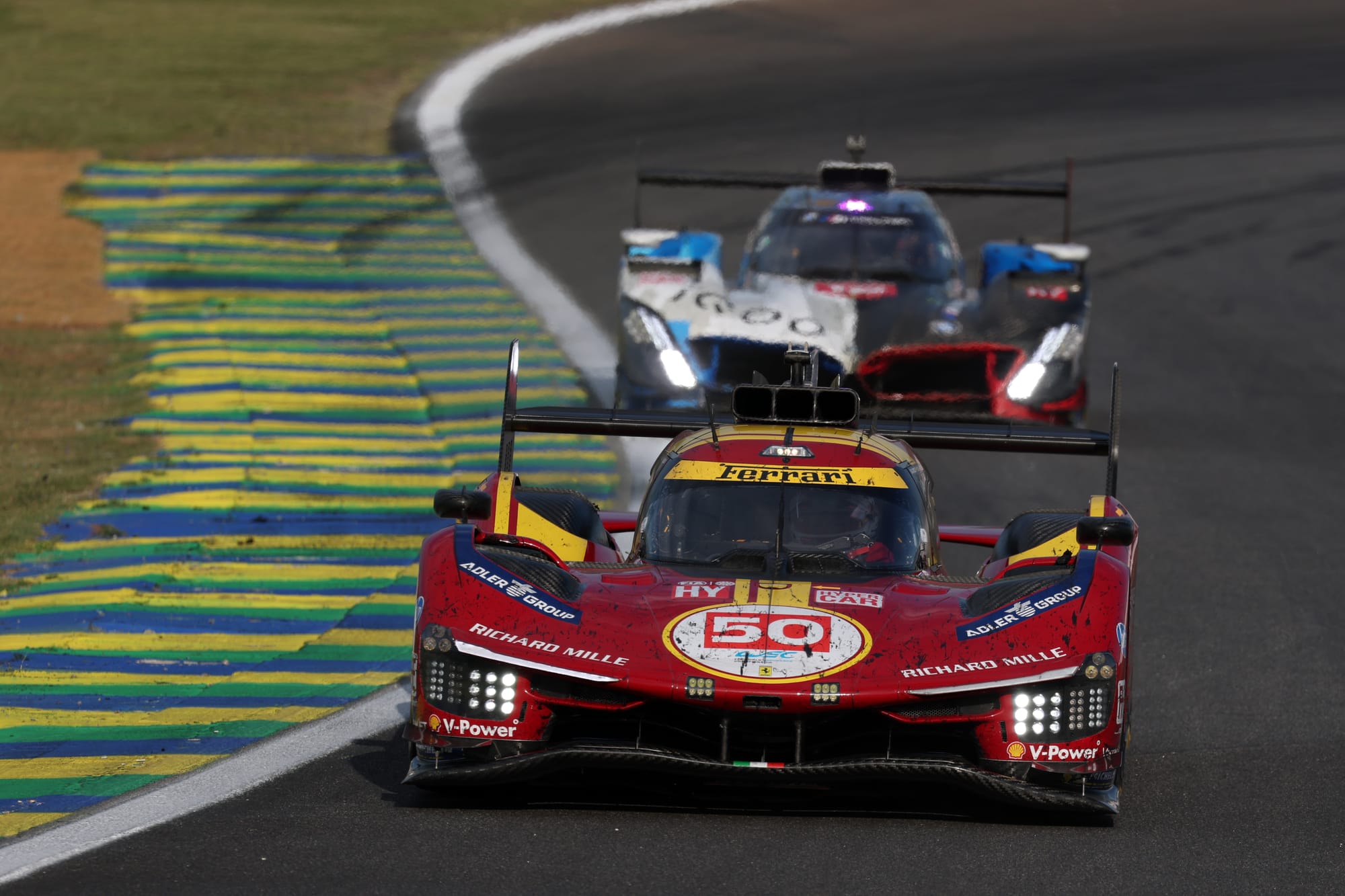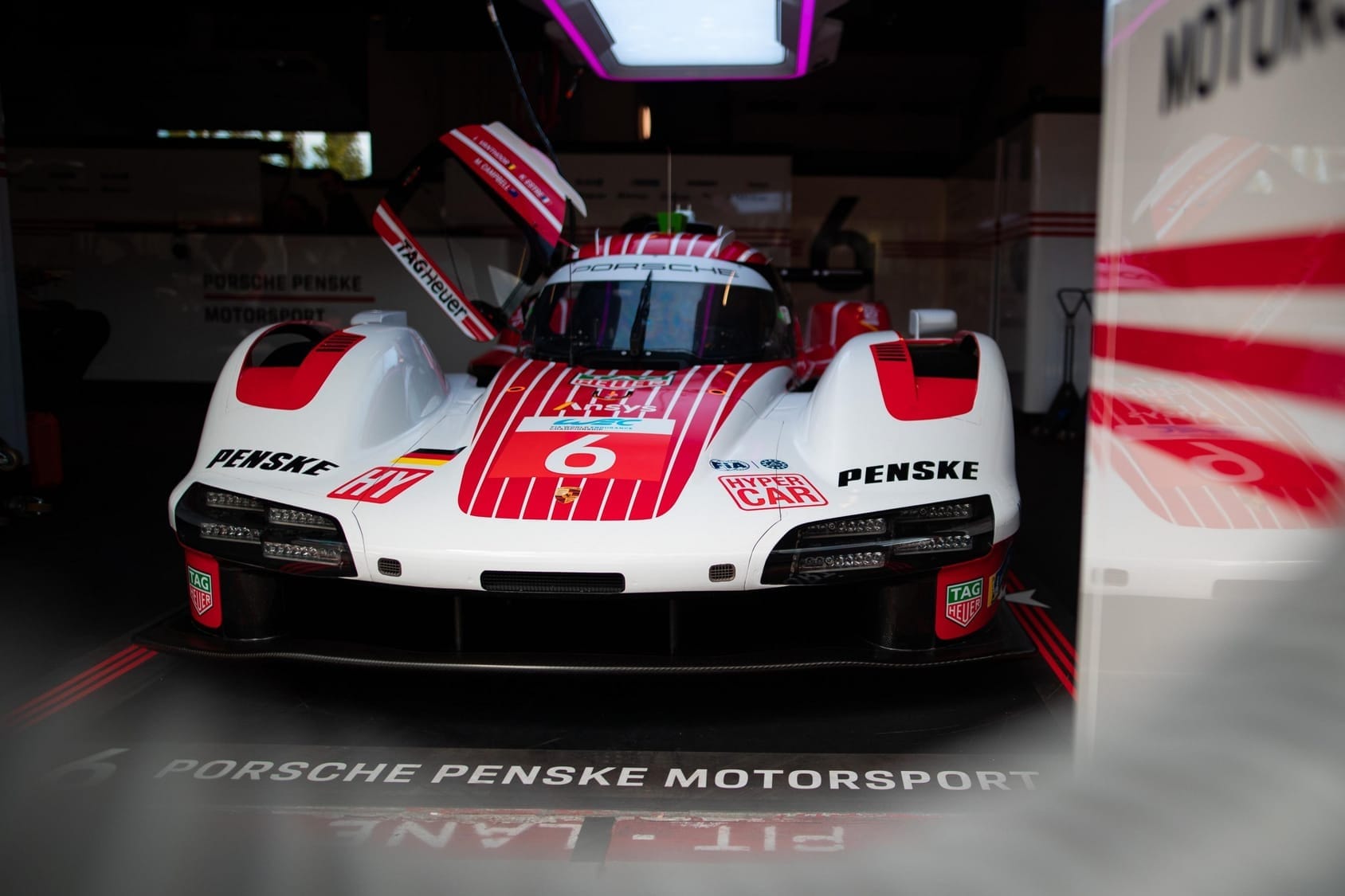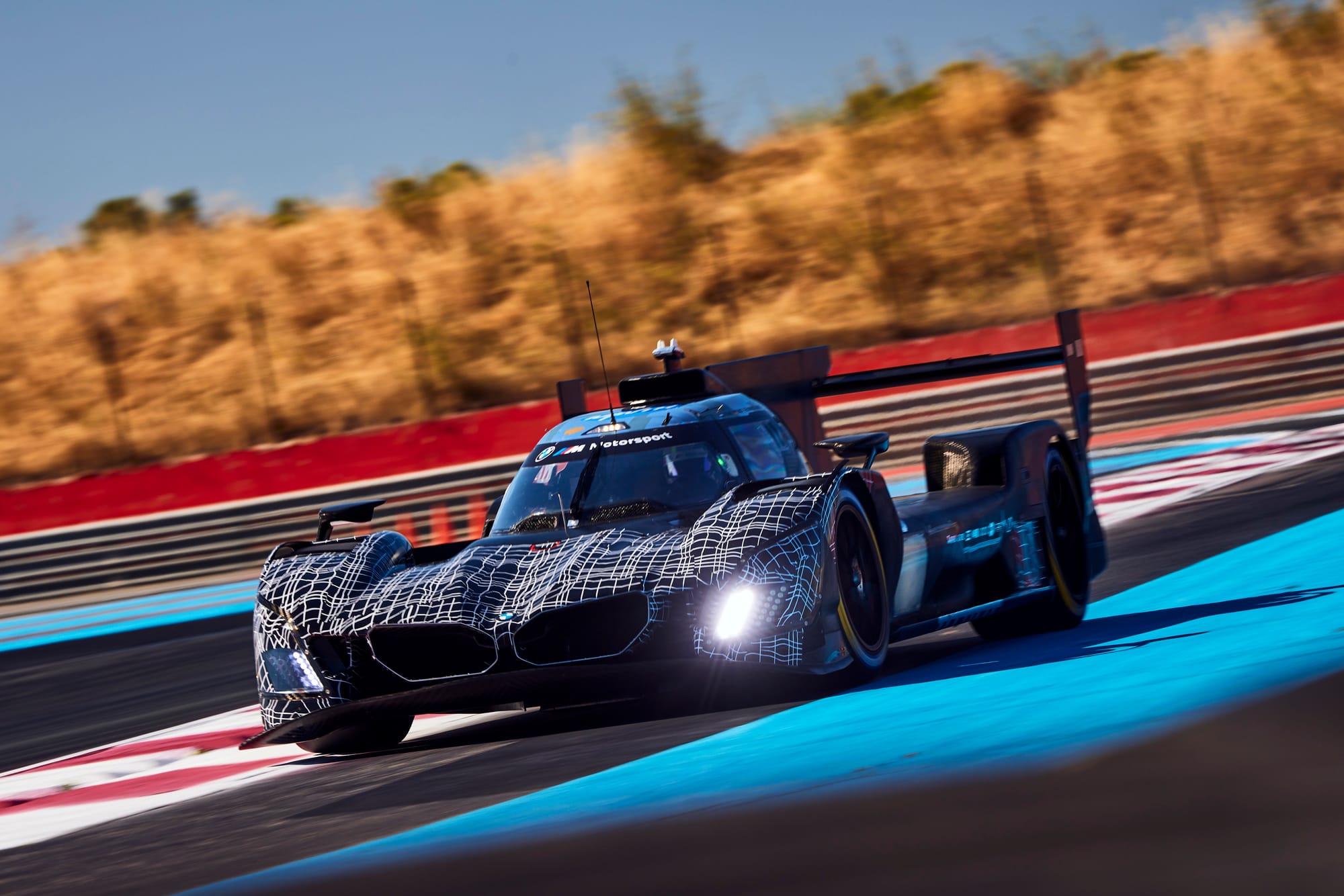Following a series of meetings between themselves, Hypercar/GTP manufacturers gathered in Paris last Friday for a summit with the FIA, the Automobile Club de l'Ouest and IMSA.
Every current and incoming brand was represented, among them Genesis, McLaren and Ford. On the agenda were two burning issues: LMH/LMDh convergence, and the controversial Balance of Performance.
But what is really at stake here, and where exactly is this heading?
Yes, LMH and LMDh are technically different, but those divergences are far from the only problem of the WEC. What's clear is that action is needed, fast. Because so far, the show on track hasn't lived up to the quality of the grid.
What are the differences between LMH and LMDh?

The word "convergence" first appeared a few years ago to describe the rapprochement between the WEC and IMSA, who decided to adopt common technical regulations in order to secure the future of sportscar racing. Now, the term is back in vogue, this time referring to a potential merger between LMH and LMDh rulesets.
Ironically enough, the coexistence of these two rulebooks in Hypercar/GTP actually stems from the rapprochement between the IMSA SportsCar Championship - which had always championed LMDh - and the WEC, which initially launched with the LMH concept before later accepting LMDh.
We won't go back over all the differences between the two platforms, which we covered in July when we revealed the existence of this convergence project.
Four-wheel drive, aero flexibility and underfloor design are among the advantages LMH cars are said to enjoy, according to LMDh supporters. But according to Porsche Motorsport vice-president Thomas Laudenbach, there's more to it than that.
"It's a lot of little things," Laudenbach said. "And little differences make [bigger] differences.
"It's not only the four-wheel drive. The LMDh cars have a common hybrid system, which we cannot really touch, we just can use it. I can't do any software in it. If I've got an LMH, I can do software on the control system. And don't forget the power [of the MGU-K]. As a matter of principle, we should all have the same possibilities. This is a top level motorsport series, we're talking about an FIA world championship with a lot of manufacturers."
But it would be wrong to think LMDh only has disadvantages. Some engineers believe it is actually easier to manage the power curve with a hybrid system connected to the rear axle, a significant factor in a championship where differences are determined more by vehicle dynamics and energy management than outright power.
Who wants convergence?

The Race reported in July that the governing bodies were studying a possible LMH/LMDh convergence. Back then, a 2028 target was mentioned, but it now seems more likely to be for 2030. Three years' time was clearly too soon to change course, especially as the regulatory details for the 2030-32 rules extension have not yet been defined.
"Should we improve convergence, for instance? That's one of the questions we need to answer before the end of the year," ACO president Pierre Fillon told us in Brazil in July. And when we raised the challenge of creating a single platform, Fillon replied: "It's not impossible."
LMDh manufacturers, unsurprisingly, are firmly in favour.
"If you ask me if I would support the idea of merging these two technical rules: yes, of course," Laudenbach insisted. "I think that would be a good step. I said this one and a half years ago. The others were laughing at me, but I think this has changed a lot."
Since then, Laudenbach has rallied several of his competitors, who also opted for the LMDh regulations.
"I'm clearly in favour of a single technical regulation," head of BMW M Motorsport Andreas Roos said. "Le Mans has shown this once again. We are trying to have a level playing field, but because of the technical regulations, it is sometimes a bit difficult. It would be good to have a single technical regulation in the long term."

Alpine vice-president of motorsport Bruno Famin added: "What's certain is that it would make things easier for the rulemakers."
But there's a catch: asking LMH builders to shift their MGU-K from the front axle to the rear axle would force them to build new cars. Needless to say, they are not necessarily in favour of that. Peugeot least of all since the French brand is, as The Race can reveal, preparing a new LMH for 2027 with a hybrid system on the front axle.
What could convergence actually look like?
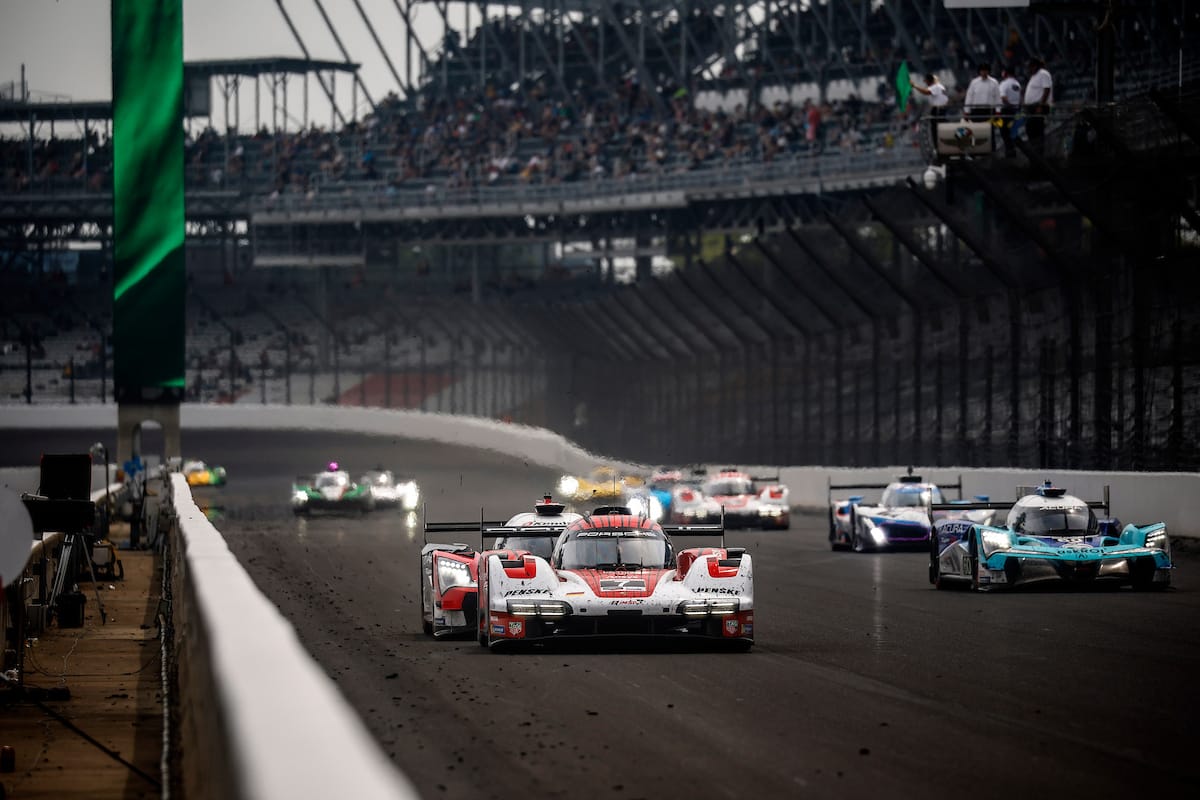
Today, it's hard to say. But Laudenbach, who maintains that Porsche's involvement also depends on this possible convergence, is convinced it can be achieved.
"Obviously, there are some constraints," he explained. "We're talking about 2030. It would be great if it would be earlier, but I just don't know if it's possible.
"I fully accept that every manufacturer has different wishes. Ferrari needs to build its own chassis, others need to be able to build their own hybrid system...but everything that I've heard so far can be solved. I'm not saying it's easy, but I'm pretty sure that this is possible."
"For the hybrid system, it depends on how you describe it," he continued. "You've just got to describe how it's attached to the powertrain, the weight, and all these kinds of things. But then everybody needs to be allowed to do it. That's the principle. I'm pretty sure that it is possible from the set of rules to give everybody the same basis."
In other words, if manufacturers do not want to use one of the standardised LMDh parts, they can design it themselves, provided that the characteristics are exactly the same. In principle, why not? But is this really the biggest issue facing the Hypercar category today?
Convergence can't overshadow BoP concerns

Believing convergence alone will fix the WEC is wishful thinking. More importantly, it risks distracting from the bigger headache: Balance of Performance.
It is worth recalling that before the 2024 Le Mans 24 Hours, the 'BoP platform' (which balances LMH and LMDh) had disappeared, proof that the governing bodies themselves recognised that the coexistence of two technical regulations was not the issue. But surprise, it reappeared this year.
Since LMDh cars arrived in the WEC at the start of 2023, they have taken only five wins compared to 16 for LMH cars. But those statistics are misleading; Toyota dominated 2023 not because the GR010 was inherently superior, but because it was proven and the team knew the game inside out.
More endurance racing coverage
- Everything we know about tense WEC driver market
- Verstappen gets his Nordschleife permit despite rules complication
- What you need to know about McLaren's plan to win Le Mans
Certainly, there are differences between LMH and LMDh, but didn't Toyota (LMH) and Porsche (LMDh) fight for world titles right down to the final round of the 2024 season? There is more of a gap between the best and worst LMH than between the best LMH and the best LMDh.
Yes, Le Mans overshadows everything, and no LMDh has ever managed to win Le Mans. That is the race Laudenbach refers to. And he even considers that the #6 963 should have won this year as it did a perfect race. But since Ferrari arrived, even Toyota - with its LMH - hasn't been able to do it. The problem therefore lies elsewhere.
And this year, it was indeed Porsche - with an LMDh car - that was Ferrari's main rival. So isn't it the BoP or the homologation parameters more than the coexistence of these two platforms that needs reworking?
Can we do without BoP?
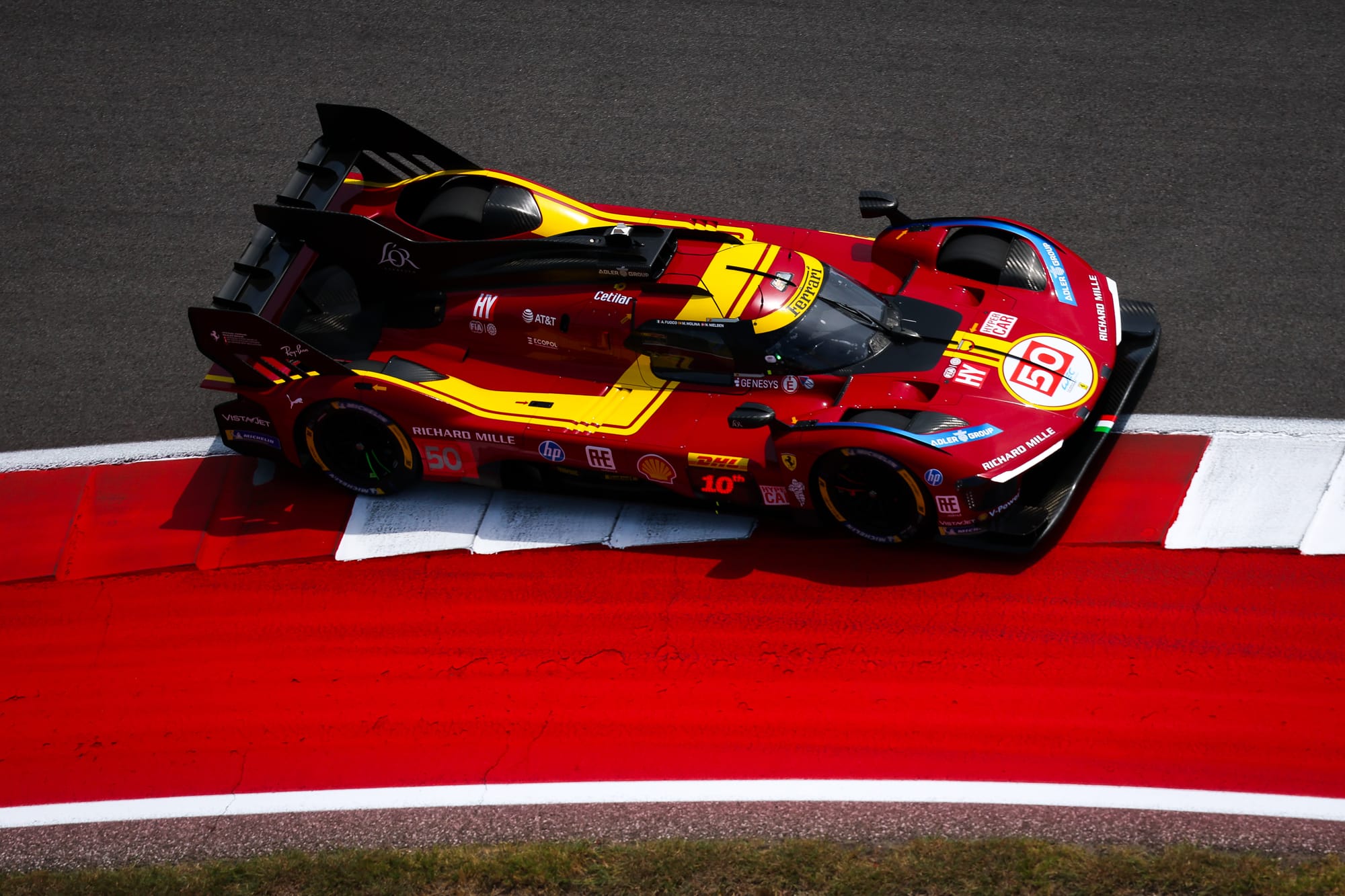
The system used to calculate BoP adjustments changes constantly. Excluding Le Mans, which is not part of the equation, we have already had three different systems this year, different again from the one used in 2024. The rulemakers are still fumbling for a formula that works.
But irritated by constant criticism, the FIA/ACO tandem is reportedly considering simply scrapping this damned BoP altogether. Possible? All manufacturers are said to be opposed, except one, thought to be Ferrari.
"I don't think it's possible," Laudenbach told us. "The convergence would make the whole thing a lot easier and could minimise the impact of the BoP. And why not combine it with something else, for example: only allow development to competitors that are a little bit behind? But don't forget that we still need to control the budget and the development."
Even if not strictly followed, this is already supposed to be the case, since the rules stipulate that an Evo Joker can only be requested in the event of a proven performance deficit. Unfortunately, the rules are not really enforced in this way. But the idea of going further is not without merit, perhaps inspired by the concessions system used in MotoGP.
For reference, the concessions system is designed to equal out performance, or allow factories that are a little further behind on the timesheets to get more opportunity to catch up. Factories are put into Ranks from A to D depending on the percentage of points they've scored in the window being assessed, and that decides what they get - from more wildcards and aero updates to more chances to test, at more venues with more riders.
Convergence and BoP, both topics are on the table. If the first is worth debating, maybe it would also be wise to anticipate the arrival of Hydrogen, to avoid having the same debate in four or five years' time. As for the second, urgent action is required if this so-called golden age is truly to be one, with a show worthy of the talent of its actors.
One thing's certain: with a dozen manufacturers all pulling in different directions, pleasing everyone is impossible. Last Friday's meeting once again confirmed it to the FIA, the ACO and IMSA. It's up to the governing bodies to take the wheel, make the tough calls, and accept that some passengers may fall overboard in the process.



